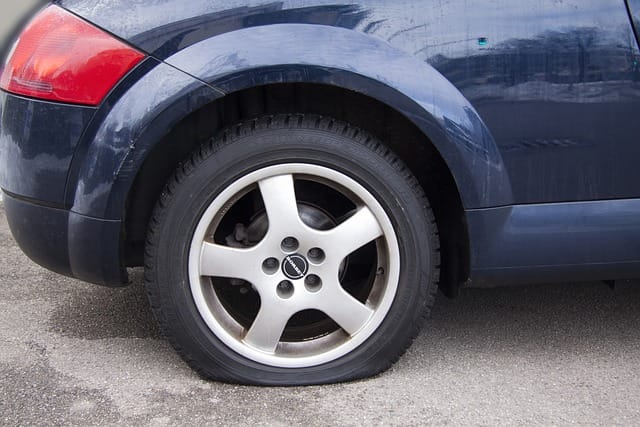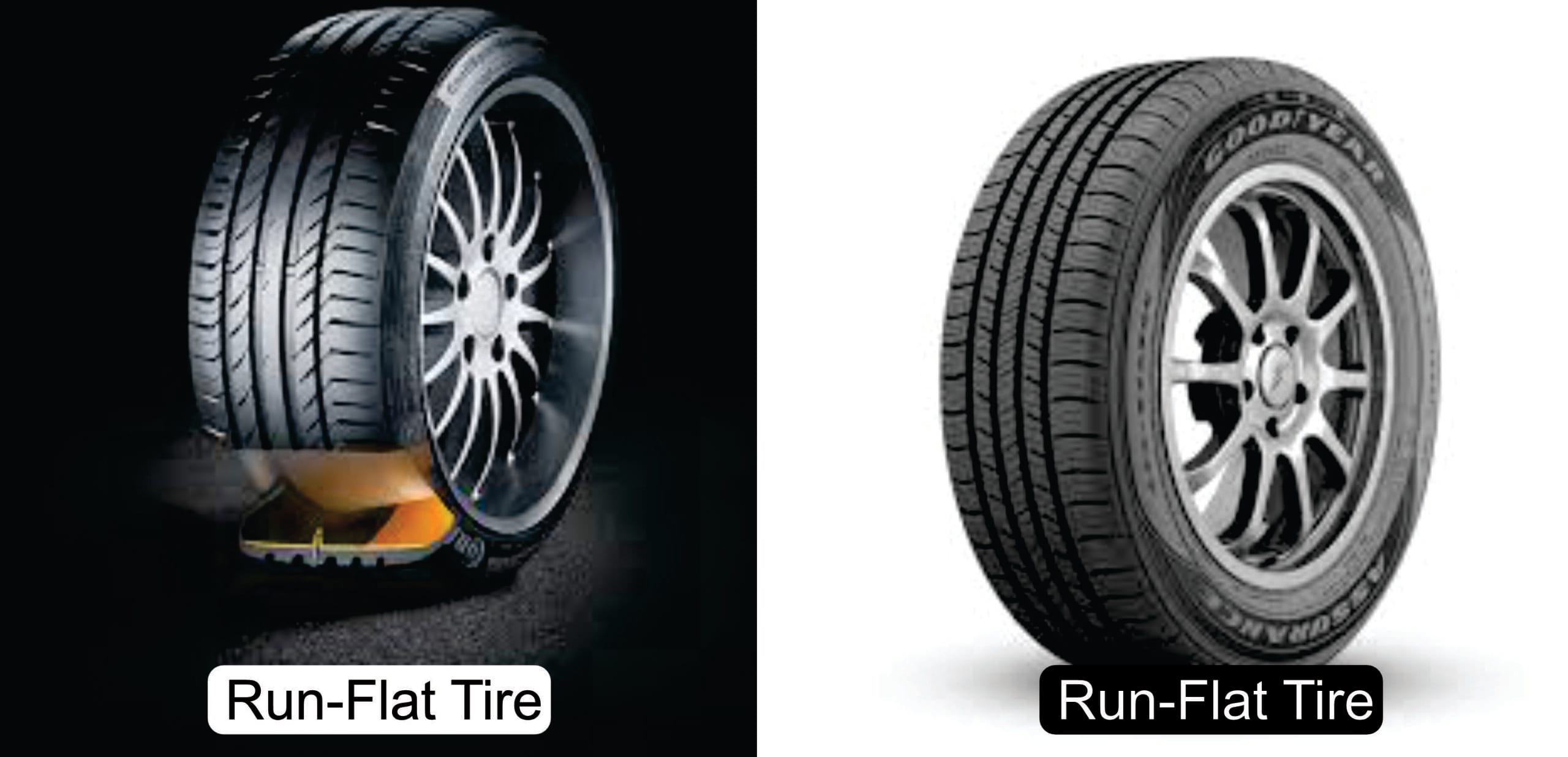You’re driving on a highway when suddenly, thud!!!; a tire goes flat. It could be at the worst possible time? Maybe on a long trip, in the middle of nowhere, or just when you’re running late, it’s frustrating! Now moving forward and to avoid this frustrating situation later, you have a decision to take on which one you should choose between run-flat tires vs regular tires.
Let’s break it down. What makes run-flat tires different? Are they really worth it? Or should you stick to regular tires for a more comfortable drive? This comparison will help you decide.
READ ALSO: Is Tire Dressing Bad for Tires?
What Makes Run-Flat Tires Different?
Run-flat tires are designed to keep you going even after a puncture. Unlike regular tires that deflate quickly when damaged, run-flats have reinforced sidewalls that help them hold their shape, even with little or no air pressure. This means you don’t have to stop immediately to change a flat tire, reducing the risk of being stranded on a busy highway or in an unsafe location.
Most run-flat tires allow you to drive up to 50 miles at reduced speeds (typically around 50 mph), giving you enough time to reach a repair shop or a safer spot to change your tire.
Another big difference is how run-flats handle blowouts compared to standard tires. With regular tires, a sudden loss of air can make your car unstable, causing it to swerve or lose control. Run-flat tires, on the other hand, are built to support the vehicle’s weight even when air pressure drops, providing better stability and control.
This can be especially helpful if you’re driving in heavy traffic or bad weather, where losing control of your car could be dangerous. However, this added security comes with a trade-off—run-flat tires tend to have a stiffer ride because of their reinforced structure, which can make your car feel rougher on bumpy roads.
One key thing to keep in mind is that run-flat tires often don’t come with a spare. Since they are designed to let you keep driving after a puncture, many car manufacturers skip the spare tire altogether to save space and reduce weight. This means if you drive on a run-flat for too long or the damage is too severe, you’ll need to replace the tire rather than just patch it up.
SEE ALSO: Do Electric Cars Wear Out Tires Faster?
What Makes regular Tires Different?
Regular tires, also known as standard tires, rely on air pressure to support the weight of your car and provide a smooth ride. When properly inflated, they absorb shocks from the road, making driving more comfortable. Unlike run-flat tires, regular tires don’t have reinforced sidewalls, so when they get punctured, they quickly lose air, making it harder (or even impossible) to keep driving.
This means you’ll have to pull over immediately to replace the tire or use a spare. However, because they’re designed for comfort and flexibility, they usually offer a softer, more comfortable ride compared to run-flat tires.
Another key difference is that regular tires give you more repair options. If a run-flat tire gets damaged, it often needs to be replaced, but with regular tires, small punctures can usually be patched up, saving you money. They also tend to last longer in normal driving conditions and are generally more affordable to replace. Plus, you can choose from a wider variety of tire types, from all-season to performance tires, to match your driving needs.
One thing to consider is that regular tires require a spare or some backup plan in case of a flat. Most cars that use regular tires come with a spare tire, a jack, and a lug wrench, so you can swap out a flat if needed. However, this adds extra weight to your vehicle, and changing a tire on the roadside can be inconvenient or unsafe.
READ ALSO: What Maintenance does a Car need at 50000 miles?
Frequently Asked Questions
Which is better, run-flat or regular tires?
It depends on what you prioritize. Run-flat tires are great for safety and convenience, letting you drive after a puncture. Regular tires offer better comfort, affordability, and longevity. If you don’t mind carrying a spare or using roadside assistance, regular tires might be the better choice.
What is the disadvantage of a run-flat tire?
Run-flat tires cost more (sometimes up to 50% more), wear out faster, and provide a stiffer ride. Plus, not all tire shops carry them, making replacements harder to find. They also wear out faster because of their stiff design. Regular tires are widely available, cheaper to replace, and last longer in most cases.
Do run-flat tires last as long as regular tires?
No, they generally wear out faster because of their reinforced design. The stiff sidewalls add durability in case of a puncture but cause the tire to degrade more quickly over time.
Can I replace run-flat tires with regular tires?
Yes, but check if your car was designed for run-flats. Some vehicles lack a spare tire well, so you might need to carry a portable air compressor or sealant instead.
READ ALSO: Can You Mix Synthetic and Conventional Oil? Here Is Your Answer
Can I mix run-flat tires with regular tires?
No, it’s not recommended. Mixing tire types affects handling, stability, and braking performance. If replacing tires, switch all four to the same type.
Do run-flat tires wear out faster?
Yes, they wear down faster than regular tires due to their stiff construction. If longevity is your priority, regular tires are the better option.
How many years do run-flat tires last?
On average, run-flat tires last around 25,000 to 30,000 miles, while regular tires can last up to 50,000 miles or more, depending on driving conditions.
Can I have two run-flat tires and two regular tires?
No, mixing them compromises balance, traction, and overall performance. Stick to one type across all four wheels for a safer and smoother ride.

Which One Is Right for You?
Choose Run-Flat Tires If:
- You drive in areas where stopping to change a tire is unsafe.
- Your car already comes with run-flats, and you prefer their convenience.
- You want to avoid carrying a spare tire.
Choose Regular Tires If:
- You prioritize comfort and a smooth ride.
- You want lower costs and longer-lasting tires.
- You don’t mind carrying a spare or using roadside assistance.
Note: Not all cars support run-flat tires. If your car wasn’t designed for them, switching might require additional modifications. Regular tires, on the other hand, fit almost any vehicle without extra adjustments.
READ: K&N Air Filters Put to the Test: Are the Performance Gains Worth the Cost?
Final Thoughts
Both run-flat and regular tires have pros and cons. If safety and convenience matter most, run-flats might be worth the extra cost. But if you value comfort and affordability, regular tires are a solid choice.
Think about your driving habits, budget, and how often you face roadside issues. The right tires make all the difference in keeping your ride safe and comfortable.










